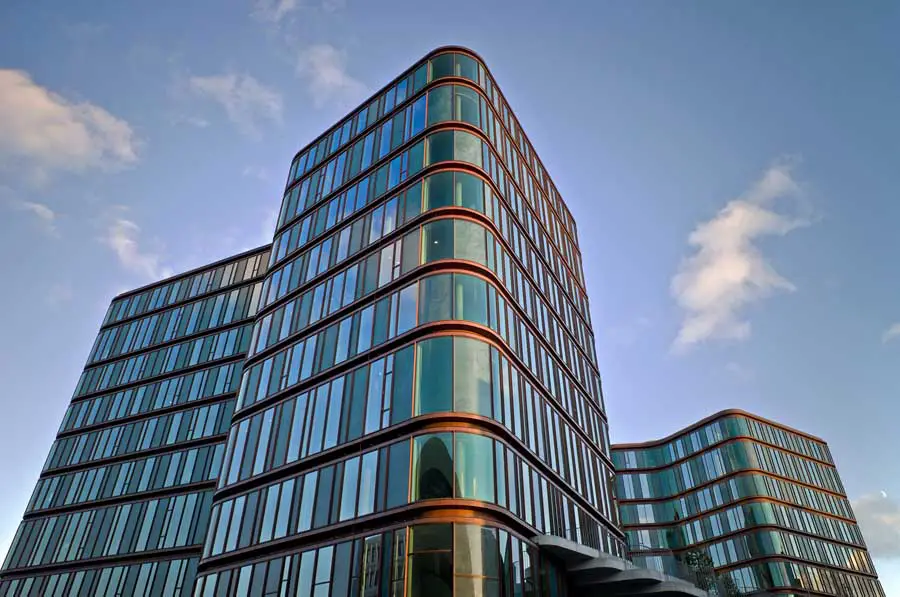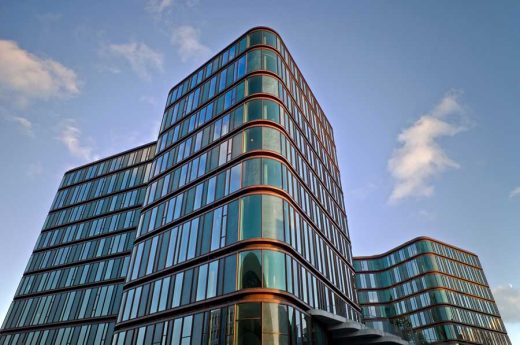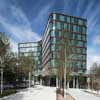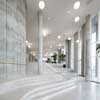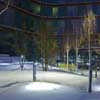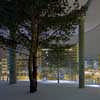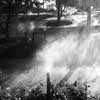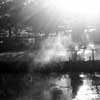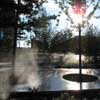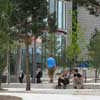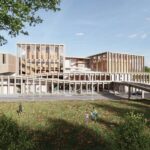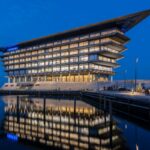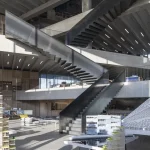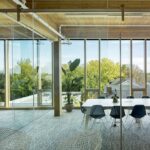The City Dune, Copenhagen Landscape Architecture, SEB Headquarters Building, Danish Offices
The City Dune Copenhagen : SEB Headquarters
New Office Building Landscape + Public Realm in Denmark design by SLA
19 May 2011
The City Dune in Copenhagen
Design: Lundgaard & Tranberg
SEB HQ Copenhagen
Lundgaard and Tranberg have created two remarkable buildings, one being the SEB Headquarters, the other a smaller office building for rent. They have created a fine new landscaped space for Copenhagen which climbs via a zig-zag of paths to join the upper level urban park that was envisaged in the masterplan for the development of the former freight yards.
The free-form buildings, responding to sun and views, are well composed and are attractively clad with glass panels (60% transparent, 40% highly insulated glass panels of an attractive deep turquoise colour) with deeply recessed, copper-clad joints at all floor levels. Inside the buildings the ground floor plane rises in an intricate series of steps and stepped seating that extend beyond the curtain wall to the landscape outside.
SEB Headquarters Copenhagen – Building Information
Architect: Lundgaard and Tranberg
Client: SEB Bank and Pension
Contractor: Ramboll
Contract Value: confidential
Gross internal area: 2,711 sqm
The City Dune Copenhagen
The City Dune – acclimatized urban space in Copenhagen
Design: SLA
The harbor front of Copenhagen has through the years been widely criticized for being the home of low quality office buildings, introvert shopping malls, bad infrastructure for cyclists and pedestrians, and few, if any, public spaces worth using. Here, above an underground car park on the corner of Bernstorffsgade and Kalvebod Brygge, the Swedish SEB Bank chose to erect its Scandinavian headquarters. SLA got the assignment to create the urban space that would tie the headquarter together with the surrounding area, the harbor, and the rest of Copenhagen.
An open space in front of a bank does not necessarily need to be anonymous, grey and void of people. On the contrary, SLA designed the area as a green and welcoming urban space for the public and employees of the bank alike. The result is a fully accessible urban space covering an area of 7.300 m2.
Like a giant dune of sand or snow it slips in between and clings around the buildings, thereby creating a spatial coherence in the design. Simultaneously, the green tract, elevated 7 meters above the surroundings, ensures the mobility of pedestrians and cyclists, leading from SEB and the harbor past The Danish National Archives and on to the Tivoli Congress Center.
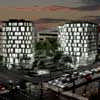
illustration Grey and Lindstrøm
To fully experience The City Dune, one has to physically move through it. When passing through the area, the space evolves and opens up in different directions, creating new spatial connections in the process. When ascending from Bernstorffsgade, the space gradually unfolds as you walk along the 300 meter long and winding incline. Looking back against the city, the buildings frame a solid cut of Copenhagen. The ascent from Kalvebod Brygge is shorter and steeper. Here one will soon rise to a splendid view of the harbor.
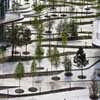
photograph © OREV Vandingssystemer
The City Dune is made of folded white concrete, borrowing its folding movement from the sand dunes of Northern Denmark and the snow dunes of the Scandinavian winter. This folding technique has several benefits: By making the surface of the concrete as large as possible, the high Albedo-effect of the surface creates a cooler microclimate during the warm periods of the year by reflecting as much of the incoming heat radiation as possible.
The contour of the terrain is the most important characteristic for the spatial relations of the space: It handles functional and technical demands from drainage, accessibility and lighting to plantation and the creation of a root-friendly bearing layer; it offers a variety of routes suitable for skaters and walking-impaired as well as the customers and employees of SEB; and finally the terrain creates a special atmosphere by favoring the sensuous abilities in both the near and far surroundings.
The variety of the spaces appeal to our ‘flowing intelligence‘, as the ability to navigate through a stream of information, instead of the ‘crystallized intelligence‘ of memorizing knowledge already known. The flowing intelligence is activated through the shifts in terrain, plantation, weather and other people moving in the urban space. Two visits will never be identical. Next time, one will find another route, and the urban space will appear differently as it changes with the weather, the light, the time and the visitor’s own frame of mind.
The plantation is of great significance in this context. The trees and herbaceous borders are placed so that the design appears flat and two-dimensional when seen from distance. It is not until one move through the design that one grasp the three-dimensional experience. It is not an arrangement that mimes nature. It is a new manner of seeing and experiencing nature in the city. The ambition is to create an urban view of nature through a design that clarifies the presence of nature as a process, while simultaneously supporting acclimatization and other functional conditions.
The in-situ poured concrete has a non-skid and water-repellent surface. To create a cooler microclimate and a cooling breeze during the warm periods of the year the surface has been made as large as possible by being folded up and down, in and out, creating a high Albedo-effect reflecting as much of the incoming heat radiation as possible.
The folding shapes of the white concrete draw inspiration from the snow dunes of the Scandinavian winter; of drifting snow between buildings. Just like snow dunes, the folding concrete is a composition of spaces that differentiates while moving through them. The cooling abilities of the concrete folds is further enhanced by water atomizers, utilizing accumulated rainwater and emitting moist air spread by the wind, resulting in the experience of being in the middle of the lush Scandinavian nature.
Images of the building by Lundgaard & Tranberg Arkitekter under construction:

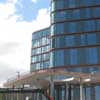
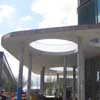
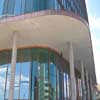
The plantation is established in fissures between the shelving and the horizontal planes. Both deciduous and evergreen plantation has been utilized to achieve great metabolism of water and substances throughout the year. Ten sorts of herbaceous perennials and grasses with varying heights have been used. They, too, contribute to the metabolism of water and substances in the urban space as well as enhancing the microclimatic environment with wind and shelter. All in all, the SEB urban space provides not only utility but also recreational value to the city.
Images of the building by Lundgaard & Tranberg Arkitekter under construction:
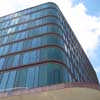
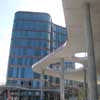

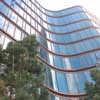
photographs © Adrian Welch
The City Dune Copenhagen – Landscape Information
Title: The City Dune – acclimatized urban space in Copenhagen
Programme: Design of acclimatized urban space in Copenhagen
Designer: SLA (Stig L. Andersson, Ulla Hornsyld, and others)
Buildings: Lundgaard & Tranberg Arkitekter
Engineer: Rambøll A/S
Commissioned by: SEB Bank & Pension
Area: 7.300 m2
Design: 2005-07
Implementation period: 2007–10
Budget: € 4.850.000
Type: Urban Space
The City Dune Copenhagen images / information from SLA
More photos of the building by Lundgaard & Tranberg Arkitekter under construction:
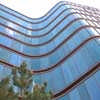
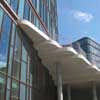
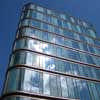
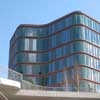
photographs © Adrian Welch
Lundgaard Tranberg Arkitekfirma
Location: Bernstorffsgade, Copenhagen, Denmark, northern Europe
Copenhagen Architecture
Contemporary Architecture in Denmark
Danske Arkitekter : Danish Architects
More photos of the building by Lundgaard & Tranberg Arkitekter under construction:
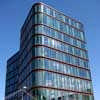
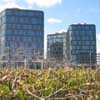
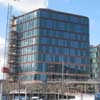
photographs © Adrian Welch
Copenhagen Building News – Selection
Northwest Park : SLA
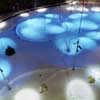
photograph : Torben Petersen
Additions / photos for the The City Dune Copenhagen Landscape page welcome

